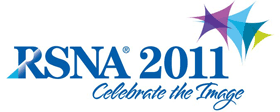
Abstract Archives of the RSNA, 2011
SSK14-04
Optimization of Pediatric Body CT Scanning Protocols Using a Low-Dose Simulation Tool
Scientific Formal (Paper) Presentations
Presented on November 30, 2011
Presented as part of SSK14: Pediatrics (Radiation Dose Reduction)
Lifeng Yu PhD, Presenter: Nothing to Disclose
Joel Garland Fletcher MD, Abstract Co-Author: Grant, Siemens, AG
Grant, Genentech, Inc
Grant, Johnson & Johnson
Consultant, Abbott Laboratories
Kristen Barry Thomas MD, Abstract Co-Author: Nothing to Disclose
Jane S. Matsumoto MD, Abstract Co-Author: Nothing to Disclose
Maria Shiung, Abstract Co-Author: Nothing to Disclose
Jaywant N. Mandrekar PhD, Abstract Co-Author: Nothing to Disclose
Brian Timothy Welch BS, Abstract Co-Author: Nothing to Disclose
Cynthia H. McCollough PhD, Abstract Co-Author: Research grant, Siemens AG
To retrospectively determine the optimal radiation dose in weight-based kV/mAs technique charts for pediatric body CT using 102 pediatric cases and a low-dose simulation tool.
102 clinically-indicated pediatric chest and abdominal CT exams were performed using previously developed weight-based kV/mAs technique charts, including 24, 39, and 39 cases scanned with 80 kV (<10 kg), 100 kV (10-20 kg), and 120 kV (20-45 kg), respectively. Using a validated low-dose simulation tool developed in our laboratory, we simulated images with 30%, 50%, and 70% of the original dose level for all exams. The resulting 408 exams were randomized into 4 groups. Three radiologists (two pediatric, one abdominal) independently evaluated image quality of these cases in 4 sessions in a blinded fashion. For each case, each radiologist rated the image quality (IQ) along a five point scale (1-5, with 3 being diagnostic with moderate but acceptable noise). In addition, the diagnostic confidence for each organ (lung, mediastinum, liver, kidney, spleen, pancreas, appendix, small and large bowel, and bladder) was rated. A minimum of one month was required between any 2 evaluation sessions.
The average CTDIvol in the original exams were 2.2±0.4, 3.6±0.6, 5.0±1.2 mGy for the 80, 100, 120 kV patients, respectively. The average IQ scores at 30%, 50%, 70% and 100% dose levels were 3.3±0.7, 3.9±0.6, 4.2±0.7, 4.5±0.6 for chest; 2.3±0.7, 3.1±0.7, 3.6±0.8, 4.1±0.8 for abdomen; and 2.8±0.7, 3.5±0.7, 4.0±0.8, 4.6±0.6 for pelvis, respectively. Percent of cases that are acceptable (at least 2 out of 3 radiologists scored 3 and above) at the four dose levels were 96%, 98%, 97%, 100% for chest; 43%, 85%, 95%, 93% for abdomen; and 71%, 92%, 97%, 100% for pelvis, respectively. To yield a 100% acceptance rate, 100 kV allows a 50% dose reduction for all exams; 120 kV allows a 50% dose reduction for chest and pelvis, but only 30% for abdomen; 80 kV does not allow any dose reduction for all three body regions.
Optimal radiation dose levels at each kV for pediatric body exams were determined by retrospectively evaluating 102 cases. 30-50% dose reduction can be achieved at 100 and 120 kV while maintaining clinically acceptable image quality.
Optimal radiation dose levels were determined at each kV for pediatric body exams. A dose reduction of 30-50% can be achieved at 100 and 120 kV while maintaining clinically acceptable quality.
Yu, L,
Fletcher, J,
Thomas, K,
Matsumoto, J,
Shiung, M,
Mandrekar, J,
Welch, B,
McCollough, C,
Optimization of Pediatric Body CT Scanning Protocols Using a Low-Dose Simulation Tool. Radiological Society of North America 2011 Scientific Assembly and Annual Meeting, November 26 - December 2, 2011 ,Chicago IL.
http://archive.rsna.org/2011/11008210.html

